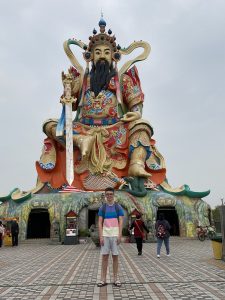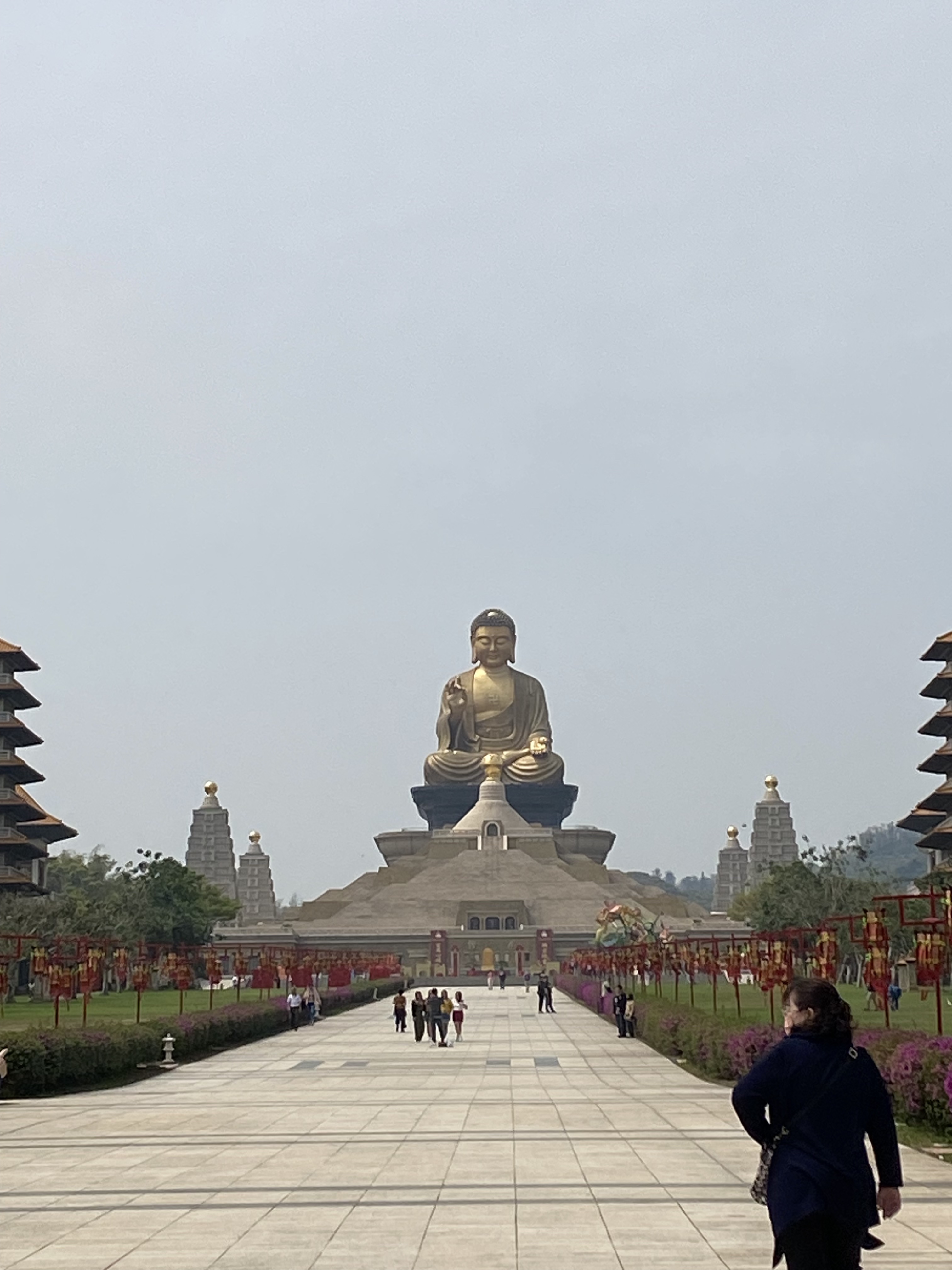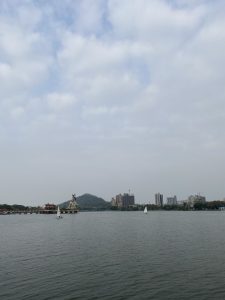
Visiting a Daosit Shrine at the Lotus Pond
台灣四月
自上次月度報告以來發生了很多事情,包括一場地震,但是我還是選擇在本報告中重點介紹我周末的高雄之行。像往常一樣,我附上了一些照片,希望它們能讓你們對我去過的地方有一些了解。我會在下一篇報告中討論地震問題!
這個月我決定了去一趟高雄,因為我還沒去過。高雄是台灣南部最大的城市,以其美麗的建築很有名。這是我期待已久去的地方,所以終於可以去了。幸運的是,從台北到高雄乘坐高鐵只需要大約 2.5 個小時,所以我在周五上午上完課後就離開了台北,下午就到了高雄。我在那裡住了兩個晚上,週日晚上返回台北。
高雄給人的感覺就像一個更小、更輕鬆的台北。那裡仍然有地鐵,但比台北的地鐵小很多。那裡的老人說話的台灣口音也比台北重,但是要聽懂他們在說什麼不太難。
週五下午,我來到了高雄的蓮花池。這是一個位於城市中央的大型人工湖,周圍有許多寺廟和佛塔。我使用免費的公共自行車環湖騎行,然後在主要的寺廟和神社停留。美麗的建築和平靜的湖面對面輝映,使這裡成為我在台灣迄今為止最喜歡的地方之一。
在參觀一座道教神廟時,一位名叫馬克(英文名茲)的當地年輕人向我走來,解釋說他是業餘導遊,很願意免費帶我參觀!馬克帶我參觀了神廟,並教我如何利用神廟來算命。他還幫我翻譯寺廟裡的文字和雕刻,練習我的古代漢語。這樣的小經驗讓我在台灣度過了美好的時光。
第二天,我參觀了高雄郊外的佛光山寺。這是一座巨大的佛教寺院,也是世界上最大的寺院之一。寺院中央還有一尊巨大的金色佛像。我花了一整天的時間參觀了整個寺院和遊客中心,但這是值得的。
總而言之,我在高雄度過了一段愉快的時光。如果有機會再來台灣,我還想在那裡多待一段時間。這裡平靜的氛圍和熱帶氣候是絕妙的組合。
陳白宇

April in Taiwan
A lot has happened since my last monthly report, including an earthquake, but I have chosen to focus this report on my weekend trip to Kaohsiung. As always, I have attached some photos, so I hope that they give you a sense of the places that I’ve been visiting. I will discuss the earthquake properly in my next report!
This month I decided to make a trip to Kaohsiung as I still hadn’t been yet. Kaohsiung is the largest city in the south of Taiwan and is famous for its beautiful architecture. It was somewhere I had wanted to visit for a long time, so it was lovely to finally go. Luckily it only takes about 2.5 hours on the high-speed rail to get from Taipei to Kaohsiung, so I left Taipei after my Friday morning classes and was in Kaohsiung by mid-afternoon. I stayed there for two nights and returned to Taipei on Sunday evening.

Kaohsiung feels like a smaller and more relaxed version of Taipei. There is still a metro but it’s a lot smaller than the one in Taipei. Older people there also speak with stronger Taiwanese accents than in Taipei, but it wasn’t too difficult to understand what they were saying.
I spent Friday afternoon visiting the Lotus Pond in Kaohsiung. This is a large man-made lake in the middle of the city, and it is surrounded by numerous temples and pagodas. I used the free public bikes to cycle around the lake and would then stop at the main temples and shrines. The combination of the beautiful buildings and the calm lake made this one of my favourite places I’ve been to so far in Taiwan.
When visiting one Daoist shrine, a young local man – called Mark (English name) – approached me and explained that he was an amateur tour guide and would love to give me a free tour! Mark showed me around the temple and taught me how to use the shrine for fortune-telling. He also helped me practice my classical Chinese by translating the writing and engravings in the temple. Small experiences like this are what make my time in Taiwan great.
The next day I visited the Fo Guang Shan monastery outside of Kaohsiung. This is an enormous Buddhist monastery and is one of the largest monasteries in the world. There is also a giant golden statue of Buddha in the middle of the site. It took me a whole day to visit the entire monastery and visitor centre, but it was worth it.
Overall, I had a lovely time in Kaohsiung. If I ever come back to Taiwan, then I would love to spend more time there. Its calm atmosphere and tropical climate are a wonderful combination.
Cosmo
